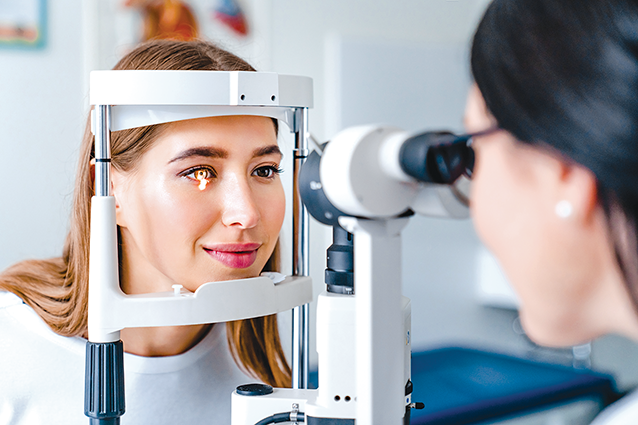Regular eye examinations are important components of a personal health regimen. Visiting an eye doctor can alert a person to potential vision impairments, and certain symptoms that show up in the eyes could be indicative of notable health problems. The American Academy of Ophthalmology says everything from brain tumors to aneurysms to high cholesterol can be detected in the eyes.
For those who do not have any apparent vision problems, most doctors recommend following a chart based on age. The insurance experts at Aetna suggest the following age-based intervals:
• Ages 20 to 39: Every five years
• Ages 40 to 54: Every two to four years
• Ages 55 to 64: Every one to three years
• Ages 65 and up: Every one to two years
Individuals who wear glasses or contact lenses, have a family history of eye disease, or have a chronic condition that puts them at risk for eye disease, like diabetes, should get vision exams more frequently.
Despite the significance of eye exams, many people do not visit an eye doctor until something is amiss with their vision or eyes. Perhaps individuals would be inclined to visit the eye doctor more frequently if they knew what to expect during an exam. Here’s what people can expect the next time they step into a private eye doctor’s office or a vision center, courtesy of The Cleveland Clinic and Warby Parker.
Visual acuity: The eye doctor will ask you to read an eye chart while looking through a device called a phoropter. This device has several lenses that can be adjusted to help you see better and find the right corrective lens prescription.
Visual field: The doctor will check peripheral vision by holding up a finger or an object and moving it gradually to the side of your face. Additional movements may include up and down. Some offices use a computer program to conduct this test.
Automatic refraction: Visual acuity can be measured with this test, during which an autorefractor shines light into the eye and measures the eye’s response. It’s commonly used with children or adults who may struggle to communicate what they’re seeing.
Pupil function: The eye doctor will briefly shine a handheld light into each eye and then move the light away to watch how the pupils constrict and dilate.
Slit lamp exam: This test involves a slit lamp, which is a type of microscope that enables the eye doctor to see the eyes in close detail.
Tonometry measurement: Glaucoma occurs when intraocular pressure is high. Some eye doctors will conduct tests to determine the pressure. One way is with a non-contact tonometry test, which is a puff of air squirted at each eye. With applanation tonometry, the doctor first administers a mild numbing agent to the eye, and then uses a pressure-sensitive instrument to gently tap on the surface of the eye to get a pressure reading. A rebound tonometry test requires a handheld device that makes brief contact to the eye and doesn’t require local anesthesia.
Pupil dilation: The eye doctor will administer eye drops that dilate the pupils, which enables a better view of the retina, optic nerve, cornea, and surrounding blood vessels during an ophthalmoscopy.
Special photography: The eye doctor may utilize specialized imaging equipment that will take digital images of the eyes to diagnose various retinal, optic nerve and corneal conditions.
These are some of the things people may experience during a comprehensive vision exam.




